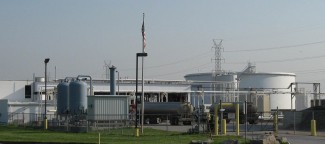Description: On average energy comprises about one quarter of the operating expenses for oil pipelines. Two things determine how much operating companies pay for their energy - the amount they use and when they use it. This lesson discusses both of those topics in detail. the lesson was produced by Tom Miesner, a veteran of oil pipeline operations in cooperation with Stephen Elliott an energy management professional. One of the items oil controllers comment on following the lesson is how much they have learned about demand charges, operating practices, and how to use DRA to manage energy costs as they are operating the line.
Learning Objectives
-
Explain the factors affecting power usage.
-
List the three primary areas in which controllers can affect energy costs.
-
Explain the three main components of energy bills.
-
Explain why VFDs are usually better for energy usage than control valves.
-
Explain demand charges and why companies have them.
-
Explain why demand charges may or may not be important.
-
Explain real time pricing and why it is important.
-
Explain coincident peaks and why understanding contracts is important.
-
Explain how DRA can be used to reduce energy costs.
-
List the three main keys to saving energy costs.
Lesson Outline
-
Keys to energy usage for controllers and schedulers
-
System resistance and power curves
-
Motors and variable speed drives
-
Centrifugal pump and station curves
-
Controlling the system – moving the operating point
-
Energy and power
-
Drag Reducing Agents (DRA)
-
Power contracts and rates
-
Demand response
-
Energy cost examples
-
Optimizing energy and DRA Costs
-
Learning objectives
-
Glossary
Format
-
81 Power Point slides presented by the instructor via the Webex platform.
-
Q & A after each slide.
-
Limited to 12 students.
Audience
-
Oil pipeline controllers
-
Pipeline design and construction engineers
-
Suppliers to operating oil pipeline companies
-
Operating company support staff
-
Oil pipeline energy managers
For more information
-
+1-281-467-3200
